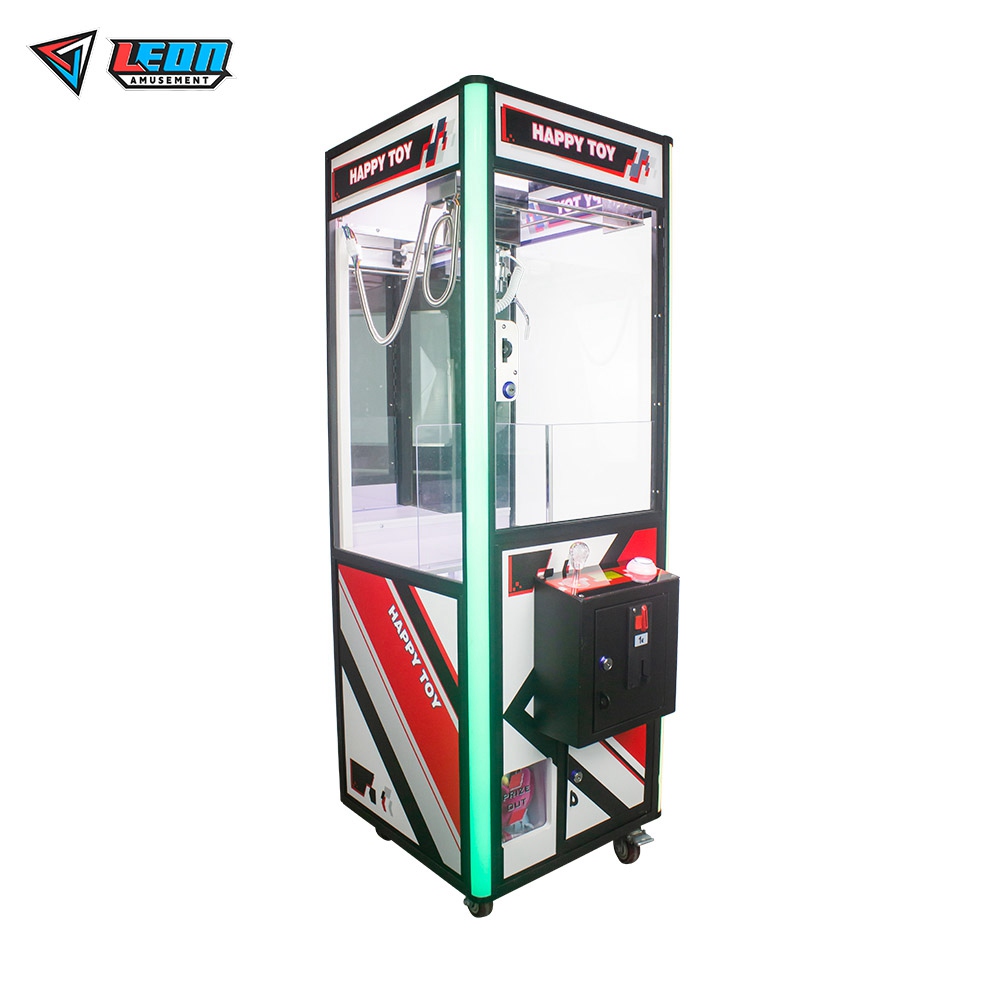Buying equipment costs about 5,000-20,000 RMB, and the price range for prizes to buy in bulk is roughly between 5-20 RMB per piece. The game charge is typically 1-5 RMB per play. A single machine’s monthly income can be 30,000 RMB (10 games per day × 100 days = 30,000 RMB). One developer suggests that by limiting the claw’s win rate to 10%, prize costs can be kept low at about 160 RMB per prize while generating several times more revenue. Much of the success depends on location—placing the machines in high-traffic areas like malls and cinemas. Adjusting difficulty levels and varying prize types can also help increase profits.
Table of Contents
ToggleLow Startup and Maintenance Costs
The startup cost for a claw machine is relatively low, primarily involving equipment purchase, rent, prize procurement, and daily maintenance. A general claw machine costs 4,000 to 20,000 RMB, depending on its size, design, and features. A basic machine can be acquired for about 5,000 RMB, while larger or custom machines can exceed 20,000 RMB. The monthly rent for a machine in a shopping mall is typically between 1,000 and 3,000 RMB, depending on the location and city. Some locations may even operate on a profit-sharing model, where the host location takes 20%-30% of the machine’s total revenue.
The cost of prizes, such as plush toys, is also relatively low. Regular plush toys typically cost between 5-20 RMB per piece, depending on whether they are branded or not. If a machine holds 100 toys, the cost to restock would be about 1,000 to 2,000 RMB. Prize costs are minimal compared to the amount spent by players, allowing operators to earn significant profits. Daily maintenance costs are also low, mainly including monthly electricity costs, restocking, and cleaning. A claw machine’s monthly electricity cost is usually between 50 to 100 RMB due to its low power consumption. Overall, the low costs and minimal maintenance make claw machines a suitable investment for small-scale investors with limited capital.
High Return on Investment Model
The profitability of a claw machine largely depends on setting an appropriate difficulty level to attract players while maintaining high profitability. A single game typically costs between 1 to 5 RMB. Assuming 100 customers play daily, with an average spending of 10 RMB per person, a machine’s daily income can reach 1,000 RMB, and its monthly income can be up to 30,000 RMB. Even with a conservative 10% success rate (meaning players succeed once every 10 attempts), the cost of prizes is about 50 to 200 RMB, allowing operators to make a substantial profit.
The claw machine’s difficulty and win rate can be adjusted according to location needs. Machines often have a preset “profit mode,” for example, with a win every 10 attempts to ensure profitability. Players’ small individual investments accumulate over frequent attempts, making claw machines highly profitable. In busy commercial areas with higher foot traffic, a single machine might be used more than 300 times per day, further boosting daily revenue to around 3,000 RMB.
Potential Risks and Challenges
According to market research, ideal locations for claw machines include shopping malls, cinemas, and amusement parks with high foot traffic. In these locations, a claw machine may be used 100 to 200 times per day, whereas machines in low-traffic areas may see fewer than 50 uses daily, making it difficult to earn more than 5,000 RMB per month. Location selection is a critical factor in a machine’s profitability.
Competition and product homogeneity are also challenges. For example, in a large shopping center in Beijing, the number of claw machines increased from 20 to 100 within a year, leading to player dispersal and a 30% drop in average revenue per machine. Similar trends have been observed in first-tier cities like Shanghai and Shenzhen, where the increasing number of machines causes profit margins to saturate.
The appeal of the prizes directly impacts players’ willingness to spend. Some operators collaborate with well-known IPs, offering limited-edition toys or merchandise to boost appeal. For example, partnering with popular anime or movie franchises can lead to a per-play cost of 10 RMB or more, while ordinary plush toys may only maintain a price of 1 to 3 RMB. Data shows that machines offering limited-edition prizes have an average daily income 20% higher than machines with ordinary prizes.

How to Improve the Profitability of Claw Machines
To improve the profitability of claw machines, optimizing location is key. Data shows that machines placed at shopping mall entrances, cinema exits, or near restaurants see 50% more usage on average than machines in less prominent locations. These locations typically attract young people and families, who are more likely to spend on entertainment like claw machines.
Frequent prize updates and high-quality prizes also directly affect player engagement. Some successful operators update prizes monthly, particularly by introducing popular IP collaboration prizes. These limited-edition items can attract more players. Some operators have increased average daily revenue by 30% to 50% by offering Disney or Marvel-themed merchandise.
Flexible pricing strategies can help claw machine operators maximize revenue based on location and target audience. In shopping centers and amusement parks, where consumers have higher spending power, the per-play cost can be set at 5 RMB or higher. In high-traffic areas with lower spending power, keeping the price low (1 to 2 RMB) can attract more players.








